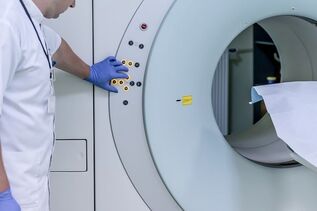Most people experience back problems from time to time and have pain in the lower back, neck or middle back. In fact, back pain is the most common physical discomfort in the adult population and the main cause of temporary disability. Back pain can be mild or severe, and pain can be short-term or chronic.
Back pain includes: muscle and tendon pain, disc herniation, fracture or other back problems. The reason is usually long-standing. Back pain is usually caused by spinal disease.

The structure of the spine is designed to withstand extreme loads. The structure of the spine is sufficient to enable a person to walk (standing) and flexible enough to perform trunk movements.
Viewed from the side, a healthy spine has an elongated S-shape and has natural curvature in the waist, thorax and cervical spine. The spine is the main support part of the trunk. In addition, the skeletal structure of the spine protects the spinal cord and the root of the spinal cord, thereby ensuring the normal innervation of organs and tissues.
There is an intervertebral disc that performs a buffering function between the 24 vertebrae.
Reason
Back pain is a problem that a person causes mainly for themselves. Back problems and back pain are usually caused by bad habits that have accumulated over time. These bad habits include:
- Poor posture
- Overvoltage during work
- Incorrect posture at desk or driving
- The spine is stretched or stretched repeatedly, or the weight rises abnormally and sharply.
The results of habits rarely appear immediately, but over time, their negative effects will increase. The most common type of back pain is pain associated with muscle tension around the spine. The most common is that back pain related to tension occurs in the lumbar and cervical spine. If muscle tension is related to lifting heavy objects, then the pain may increase.
Sometimes back pain may occur for no apparent reason. In this case, they are talking about non-specific back pain. This pain may be caused by muscle weakness that makes it impossible to cope with daily stress (such as walking, bending, and stretching). In addition, lack of sleep, general fatigue or stress can trigger non-specific pain.
Pregnancyis usually the cause of disease, which is related to hormonal changes in the female body, weight gain, and excessive pressure on the spine and legs.
Injuries from contact sports, accidents and falls can also cause back problems, ranging from minor muscle strains to serious injuries to the spine and spinal cord.
It is important to understand that back pain is a symptom of the disease, not a diagnosis. Medical conditions that can cause back pain include:
Mechanical problems: Mechanical problems are related to the movement of the spine or the sensations that people feel when performing certain movements. The most common mechanical cause is intervertebral disc degeneration (osteochondrosis). When the intervertebral disc changes inward and deteriorates the amortization function of the intervertebral disc, it can cause pain. Another cause of back pain is degenerative changes in the joints of the spine (spondyloarthritis). Other mechanical causes include muscle cramps, muscle tension, and herniated disc.
Injuries: Spinal injuries such as sprains and fractures can cause both acute and chronic pain. A twisted or improperly lifted trunk can cause sprains and tears in the ligaments that support the spine. Vertebrae fractures are usually the result of osteoporosis, which is a disease in which bone density is impaired. Less commonly, more serious injuries due to falls and falls can cause back pain.
Acquired diseases and diseases. Many medical conditions can cause or cause pain. These include scoliosis, kyphosis, and kyphosis, usually without pain before middle age. Various types of arthritis (osteoarthritis, rheumatoid arthritis, ankylosing spondylitis), spinal stenosis, can affect the nerve roots of the spinal cord. Diseases such as osteoporosis are painless by themselves, but can cause vertebral fractures, which are manifested as severe pain. Other causes of back pain include pregnancy, kidney infections or urinary tract stones, endometriosis, and fibromyalgia, which is characterized by chronic fatigue and diffuse muscle pain.
Infections and tumors. Although infection is not a common cause of disease, infection can still cause pain. If bone tissue is affected, then we are talking about osteomyelitis; if the infection affects the intervertebral disc, then we are talking about discitis. Tumors are also relatively rare in terms of pain. Sometimes spinal tumors are primary, but in most cases the tumors are metastatic and the main focus is on another part of the body.
Although the cause of back pain is usually physical, it is important to understand that emotional stress can play a role in the intensity and duration of pain. In addition, stress and emotional health can also affect skeletal muscle tone. Therefore, in the presence of depression and anxiety, back pain may be more severe. In addition, insomnia or lack of sleep can also cause pain or worsen pain.
Back pain is just a symptom and may be reflected. Many diseases of the peritoneum and pelvic organs can cause spinal pain (appendicitis, aneurysm, kidney disease, bladder disease, infection and pelvic inflammatory disease).
Risk factors
- Over 40 years old
- male
- Family History
- Previously injured
- pregnancy
- Past surgical operations on the spine
- Congenital spinal deformity.
- Lack of regular exercise
- Work or activities that require long periods of sitting and lifting heavy objects.
- Smoking. People who smoke regularly have back pains than those who don’t.
- Overweight. Being overweight, especially those with fat in the waist, may put more pressure on the back and often lead to muscle weakness and limited mobility
- Poor posture. Impaired posture can cause confusion in the distribution of load vectors and cause muscle tension, muscle cramps and pain.
- Stress. It is believed that stress and other emotional factors play an important role in back pain, especially chronic pain. Many people will tighten their back muscles unconsciously under pressure.
- The condition after prolonged depression.
- Long-term use of drugs that weaken bone tissue (such as steroids).
- Lung disease that causes chronic cough.
Symptoms
Most people have experienced back pain in their lifetime. There are many causes of back pain, some of which are caused by one person. Other causes include accidents, muscle sprains, sports injuries and various diseases. Although the causes may be different, in most cases they all carry the same symptoms.
- Continuous pain or stiffness in any part of the spine from the bottom of the neck to the tailbone
- Acute local pain in the neck, upper back or lower back, especially after lifting heavy objects or performing vigorous exercise. (The pain at the top can also be a heart attack or other life-threatening condition. )
- Chronic pain in the middle or lower part, especially after prolonged sitting or standing.
- Lumbar pain radiates to the buttocks of the calf.
- cannot stand upright.
But some symptoms are worth seeking medical attention
- A feeling of numbness, tingling, or weakness in your arms or legs, as this may indicate a spinal cord injury.
- Lower back pain radiates to the legs, which may be evidence of root compression (radiculitis).
- The pain gets worse when you cough or lean forward, which may be a sign of a herniated disc.
- Pain during urination with fever and burning sensation, which may be a sign of a urinary tract infection.
- Bowel or bladder dysfunction
- History of cancer
- Weight loss
- Long-term use of steroids
- History of trauma
- The discomfort will increase even after resting.
- Pain that lasts for more than a month
- Night pain
- No treatment effect
- History of drug use
Diagnosis

Since back pain may be caused by many conditions, it is important for the doctor to carefully collect memories and symptoms first. The location and intensity of the pain, as well as the presence of radiation are important. The physical examination includes a careful examination of the nervous system (reflex activity, muscle strength, sensitivity, etc. ). If you suspect pelvic organ disease, the doctor may prescribe a gynecologist or urologist.
Tool research methods
MRI is the most useful diagnostic method, which can perform high-quality visualization of bones and soft tissues, and can diagnose degeneration, tumors or infections.
In order to observe the changes of bone tissue more clearly, CT is recommended.
EMG and ENMG can determine the conduction along nerve fibers and muscles, and are usually used to diagnose chronic back pain.When it is necessary to distinguish the source of pain, ultrasound examination of abdominal organs or small pelvic organs and kidneys is required.
Laboratory research methods are also used for the differential diagnosis of inflammatory diseases or infections.
Treatment
There is no universal treatment for back pain. In each case, the treatment of back pain depends on the origin of the pain manifestation and the individual characteristics of a person, because people's perceptions vary greatly.
Medical treatment includes the use of various drugs, including conventional analgesics or non-steroidal anti-inflammatory drugs, as well as muscle relaxants or antibiotics for infection. For chronic pain syndrome, antidepressants, tranquilizers or antipsychotics can be used.

Non-drug therapies such as physical therapy, massage, manual therapy, acupuncture and exercise therapy have been widely used to treat back pain. These treatments are effective in both acute and chronic pain manifestations associated with spinal diseases.



































